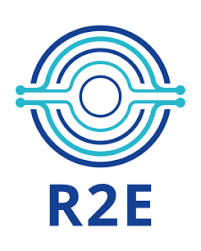The Radiation to Electronics (R2E) project at CERN is attached to the Accelerator and Technology Sector (ATS) and is disseminated through its four departments, with an especially prominent presence in the Systems (SY) and Beams (BE) departments.
The project can be divided into two main activity categories: on the one side, there is a transversal service-oriented and applied research activity, which provides horizontal support across the ATS sector (and even beyond it) in all aspects related to radiation effects on electronics and equipment. On the other, there are the actual radiation tolerant development activities, which are managed by the various equipment groups, under the supervision and quality control of the R2E project management.
Each of these two main activity types can itself be subdivided into work packages, which are listed and briefly described below:
Service and Research activities:
- RadMON radiation monitoring, in charge of the development, deployment, operation and maintenance of the vast radiation monitoring system which allows characterizing the accelerator radiation environment through the various quantities directly responsible for the effects and damage on electronics.
- Distributed optical fiber monitoring, responsible for the development, deployment, operation and maintenance of the optical fiber dosimetry system, covering the full injector chain and parts of the LHC with a fine spatial resolution.
- Radiation environment monitoring and calculation, in charge of analyzing and reporting the radiation level measurements, mainly from the two systems above, as well as the Beam Loss Monitoring system (BLM), and of studying their evolution, in close collaboration with the FLUKA Monte Carlo simulation team.
- Simulation of radiation effects, aiming at an improved understanding of how electronics is impacted by radiation in the context of accelerator applications, and aiding to derive the related Radiation Hardness Assurance implications.
- Radiation testing of electronics, providing the crucial service of qualifying components of possible use in the accelerator, and covering the full test chain: from the setup development, through the test execution, and up to the related analysis and reporting.
- Radiation testing of materials, coordinating the needs of irradiating polymer materials across the sector, through a subcontracted irradiation service, and performing R&D activities both related to material degradation due to radiation, as well as possible mixed-field irradiation facilities for material characterization.
- Radiation test facilities, in charge of maintaining, operating and upgrading the CERN irradiation facilities, including dosimetry and use support activities, and focused mainly on the CHARM and CC60 facilities.
- Project management and quality control, in charge of the coordination of the project, and ensuring a harmonized and thorough quality control of the various service activities and Radiation Hardness Assurance procedures and results.
Radiation tolerant developments:
- Power converters, that deliver large and extremely precise currents to the accelerator magnets.
- Quench protection system, which protects the superconducting magnets from being damage due to temperature increase, loss of superconducting properties, and large current circulating through them.
- Beam instrumentation, needed to accurately monitor the properties of the beam in the high-energy accelerator.
- Vacuum system, which ensures that the residual gas levels inside the beam pipes are low enough not to perturb the operation of the accelerator.
- Cryogenics system, than enables the necessary conditions for superconducting magnet operation, necessary in turn to reach the required magnet currents and fields.
- Controls, which provides transversal solutions to all systems above and beyond with regards to controls and communication electronics.
